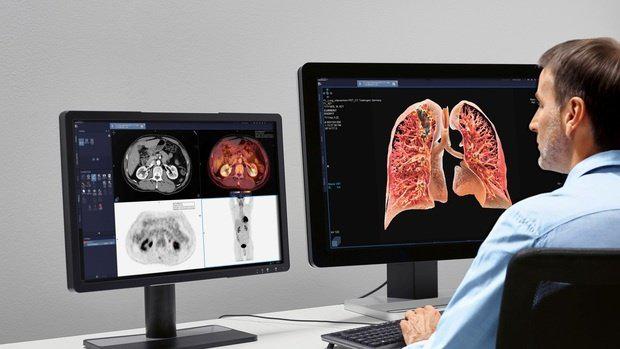The Global Cardiovascular Information System (CVIS) Market has shown significant growth, valued at USD 1.2 billion in 2023 and expected to expand at a Compound Annual Growth Rate (CAGR) of 9.00% during the forecast period from 2024 to 2032. With the increasing prevalence of cardiovascular diseases globally, this market is projected to reach USD 2.6 billion by 2032. Cardiovascular diseases (CVDs) have become one of the leading causes of morbidity and mortality worldwide, and advanced technological solutions like CVIS play a vital role in improving patient care and streamlining the clinical workflow in healthcare settings.
This blog explores the key components, market trends, and driving factors, along with an in-depth analysis of the competitive landscape featuring major players like Intelerad Medical Systems Incorporated, Central Data Networks, General Electric Company, and SoftLink International Pvt. Ltd..
1. Introduction to Cardiovascular Information Systems (CVIS)
Cardiovascular Information Systems (CVIS) are specialized healthcare management tools designed to streamline the collection, analysis, and storage of data related to cardiovascular patient care. The system is integrated with advanced diagnostic tools like electrocardiograms (ECG), echocardiography, and catheterization lab (cath lab) reports, enabling clinicians to manage large volumes of cardiovascular data efficiently.
CVIS systems are particularly important for hospitals and cardiology departments as they offer:
- Comprehensive Data Management: Easy storage, retrieval, and management of patient records.
- Enhanced Diagnostic Accuracy: Improved tools for diagnosing cardiovascular conditions.
- Streamlined Workflow: Reducing the time for manual data entry and increasing physician efficiency.
- Interoperability: Seamless integration with other hospital information systems (HIS) for improved communication between different departments.
2. Market Drivers
Several factors contribute to the growing demand for cardiovascular information systems globally, such as:
a) Rising Prevalence of Cardiovascular Diseases
Cardiovascular diseases, including heart attacks, strokes, and other heart-related conditions, are on the rise globally, accounting for a significant portion of healthcare expenditures. The demand for accurate diagnosis and timely interventions has driven the adoption of CVIS in healthcare institutions.
b) Increasing Healthcare IT Investments
With the digitization of healthcare becoming a top priority, governments and healthcare organizations worldwide are investing heavily in IT solutions to improve patient outcomes. This is a major driver for CVIS, as hospitals look for ways to enhance the efficiency of cardiovascular care.
c) Shift Towards Integrated Care
Healthcare is increasingly moving towards integrated, patient-centered care. CVIS systems allow for a cohesive approach by integrating cardiology-specific data with broader electronic health record (EHR) systems. This integration enables physicians to have a holistic view of a patient’s health, leading to better diagnosis and treatment.
d) Technological Advancements
Recent advancements in AI and machine learning have been incorporated into CVIS systems to provide predictive analytics and assist in decision-making. AI-enabled CVIS systems can analyze data from multiple sources to predict cardiac events, enhancing preventive care.
Get a Free Sample Report with Table of Contents
3. Market Trends
a) Adoption of Cloud-Based CVIS Solutions
Cloud-based CVIS systems are gaining traction due to their scalability, cost-effectiveness, and ability to offer remote access to patient data. Hospitals, especially in developed regions, are increasingly opting for cloud-based solutions to reduce infrastructure costs.
b) Integration of Artificial Intelligence
AI is playing a pivotal role in the evolution of CVIS. AI-powered tools assist cardiologists in interpreting diagnostic data, detecting anomalies in ECGs, and predicting potential cardiovascular events. The integration of AI improves diagnostic accuracy and helps in providing timely interventions.
c) Increased Focus on Data Security
With the rise in cyber threats targeting healthcare institutions, data security has become a critical focus in the CVIS market. Vendors are increasingly offering CVIS solutions with robust encryption protocols and advanced security features to ensure the protection of patient data.
4. Market Forecast and Growth
The cardiovascular information system market is projected to grow from USD 1.3 billion in 2024 to USD 2.6 billion by 2032, at a CAGR of 9.00%. The following factors contribute to the forecasted growth:
a) Demand for Cardiovascular Care in Aging Populations
The aging population is more prone to cardiovascular diseases, which increases the demand for efficient and advanced healthcare solutions. CVIS enables hospitals to manage growing patient volumes while maintaining high standards of care.
b) Expanding Healthcare Infrastructure in Developing Regions
As healthcare infrastructure improves in developing regions like Asia-Pacific and Latin America, hospitals in these regions are increasingly adopting advanced healthcare management systems, including CVIS, to meet the growing demand for cardiology services.
c) Government Initiatives and Funding
Many governments are introducing initiatives to encourage the adoption of digital health systems, including CVIS. These efforts include financial incentives for healthcare providers to implement electronic systems that enhance patient care.
5. Competitive Landscape
Several major players dominate the global CVIS market, including:
a) Intelerad Medical Systems Incorporated
Intelerad offers a range of solutions that streamline the diagnostic and clinical workflow for cardiovascular departments. Their CVIS platform provides end-to-end data management, integrating imaging and patient records, enabling clinicians to make quicker and more informed decisions.
b) Central Data Networks
Central Data Networks specializes in providing IT solutions tailored to the healthcare industry, including CVIS. Their products focus on ensuring seamless data flow and improving the workflow within cardiovascular departments. The company has a strong presence in various global markets, particularly in the Asia-Pacific region.
c) General Electric Company
A major player in the global healthcare technology market, General Electric (GE) offers a comprehensive cardiovascular information system integrated with imaging solutions. GE’s Centricity Cardio Enterprise solution helps hospitals streamline cardiology workflows by providing a unified system that consolidates images, reports, and patient data into a single platform.
d) SoftLink International Pvt. Ltd
SoftLink International provides a highly customizable CVIS that caters to the specific needs of cardiology departments. Their solution is designed for easy integration with hospital information systems (HIS) and radiology information systems (RIS), allowing cardiologists to access all necessary information from a single interface.
6. Regional Analysis
a) North America
North America is expected to hold a significant share of the CVIS market due to the high prevalence of cardiovascular diseases, robust healthcare infrastructure, and strong adoption of healthcare IT solutions. The presence of major market players and favorable government initiatives also drive market growth in this region.
b) Europe
Europe holds a large market share as well, driven by a well-established healthcare system and a growing emphasis on digital health. Countries like Germany, France, and the UK are leading the way in the adoption of advanced CVIS solutions.
c) Asia-Pacific
The Asia-Pacific region is expected to witness the fastest growth during the forecast period due to increasing healthcare expenditure, rising prevalence of cardiovascular diseases, and improving healthcare infrastructure in countries like China and India.
7. Challenges in the Cardiovascular Information System Market
a) High Implementation Costs
One of the significant challenges faced by hospitals in adopting CVIS solutions is the high initial investment required. Smaller healthcare institutions, particularly in developing regions, may find it difficult to afford the advanced systems.
b) Lack of Skilled Professionals
CVIS systems require skilled IT professionals and cardiologists trained to work with advanced digital tools. The lack of trained professionals in some regions can hinder the adoption of CVIS solutions.



